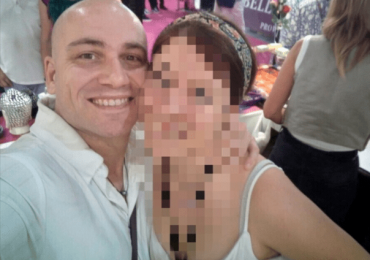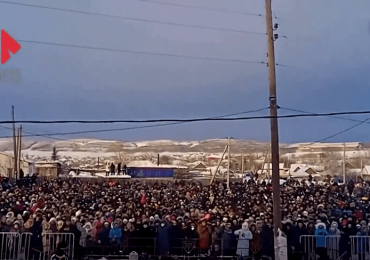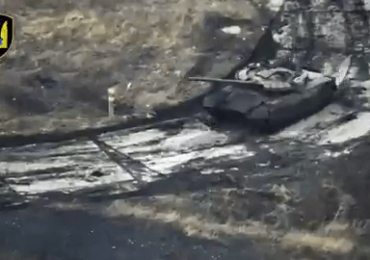On Oct. 24, Hamas posted a video from a Gaza hospital to their official Telegram channel. It was an excruciating scene. Palestinian children covered in ash, their bodies shaking, blood dripping down their faces. Some were missing limbs. Others were beyond treatment. A nurse, at one point, wrapped four lifeless infants in a plaid blanket, the apparent victims of Israel’s ongoing strikes against Hamas.
[time-brightcove not-tgx=”true”]
The Oct. 24 video montage followed a very different set of recordings released by Hamas 17 days earlier. As its fighters stormed southern Israel on Oct. 7, they live-streamed their murder of more than 1,400 people in Israel. Using their phones and GoPro cameras attached to their bodies, the Hamas members documented their slaughter of women, children, and the elderly; their kidnapping of revelers at a music festival; and a variety of barbaric acts that included burning families alive. In one video, released by the Israeli military, a Hamas fighter tries to decapitate one of the murdered with a shovel.
Taken together, the videos reflect a new social media strategy for Hamas. On the one hand, the group is continuing its traditional effort to present itself as the voice of Palestinian suffering. On the other, by recording and broadcasting the savagery of its own attack, Hamas is trying to assert itself as a dominant resistance movement in the Middle East, Hamas leaders and foreign experts say. Airing the Oct. 7 assault “shows that Israel is very weak,” Ghazi Hamad, a senior Hamas official tells TIME. “It’s easy to be defeated. It’s easy to be broken.”
The latter approach is new. While Hamas has long used terrorism as a tactic, the group showcasing its own attacks on civilians conflicts with its traditional message to the western world, says Devorah Margolin, a terrorism scholar at the Washington Institute who has studied Hamas’ public communications in English and Arabic. “There’s a bit of mixed messaging coming out right now,” Margolin says. Already, the move is having consequences. In the days after the attack, the official Hamas Telegram channel tripled its following, according to the Atlantic Council’s Digital Forensic Research Lab.
Since its founding in the late 1980s as a Palestinian offshoot of the Sunni Muslim Brotherhood, Hamas has maintained a multi-faceted persona. To internal Palestinian audiences, it has cast itself as focused, first and foremost, on violent resistance to Israel, followed by its role as the governing entity of the Gaza Strip, which it took over from the Fatah-ruled Palestinian Authority in 2007. In its original charter, Hamas committed to murdering Jews in furtherance of the elimination of the State of Israel. The group’s current charter, from 2017, says its conflict is with the ‘Zionist project’ not with the Jews, and to external western audiences it has cast itself more as victims at the hands of Israel.
As Hamas has embraced social media in recent years, those messages have adapted and evolved as the group faced new challenges. Major social media companies such as Facebook, Instagram, and Twitter removed Hamas’s official account from their platforms because the U.S. government identifies the group as a terrorist organization. But until this month, Hamas remained a presence on the little-moderated platform Telegram, relying on surrogates to share pro-Palestinian and anti-Israel content on the popular apps TikTok and Instagram.
Since its Oct. 7 massacre, Hamas has amplified its message of victimhood on social media, mixing footage of civilian casualties from the Israeli bombardment of Gaza with unproven claims of Israeli war crimes. Hamas scored a victory in mid-October, when major news outlets took its word that an Israeli strike on a Gaza hospital had killed 500 Palestinians. U.S. and Israeli intelligence later said the blast was the result of a misfired Palestinian Islamic Jihad missile that hit the parking lot, not the hospital, and killed far fewer than 500. The source of the explosion remains uncertain.
For its part, Israel continues to push back. On Oct. 30, the Israeli Embassy in Washington, D.C. screened for journalists a 43-minute video compilation the government said was footage of the Oct. 7 attack, captured on Israeli security recordings and Hamas body cams and phones, much of it posted to social media. The raw footage shows clinical and indiscriminate killings, stacks of corpses, carpet-like trails of blood left in homes. At Kibbutz Be’eri, a father and two young sons run into a hideaway shed until one of the militants spots them and throws a grenade inside, killing the father. The boys are led into the kitchen. “Daddy’s dead,” one of the brothers cries to the other. “Why am I alive?” When a Hamas terrorist enters the room, the boy screams “I want my mom!” while the man nonchalantly rummages through the fridge. “Is this juice?” he asks.
The dominant theory for the shift in Hamas’ media strategy is that the group wanted to prove, visually, to Palestinians and regional allies that it is a force against Israel, helping it to gain political clout. In recent years, rival groups like ISIS and al-Qaeda have criticized Hamas for cutting deals with the Israelis—like allowing Palestinian workers from Gaza into Israel—and not fighting them with enough ferocity. “Hamas wants genuine images of itself as resistance,” says Daniel Byman, a terrorism expert at the Center for Strategic and International Studies. In that, it is mimicking the social media strategy of ISIS. “One thing ISIS did very effectively was allowing its individual fighters to film their exploits in their own eyes. Whether they lived or died, there were advantages to both. They were triumphant warriors or they were heroic martyrs.”
On Oct. 26, Telegram suspended Hamas’ official account. Other surrogate accounts there and elsewhere remain. Hamas appears to be betting that in the age of social media and amid multiple global crises, the rest of the world will have short memories as Israel launches what is expected to be a sustained and deadly ground incursion to dismantle the group’s military capabilities and remove it from power. Either way, Margolin says, Hamas won’t be able to backtrack from its new approach to international propaganda. “They have pivoted their media strategy,” she says. “There’s no going back to the strategy they had before.”
Leave a comment
















